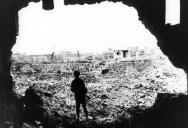This Day In History – June 22nd

DELTA KAPPA EPSILON FOUNDED – JUNE 22, 1844

Delta Kappa Epsilon (also pronounced D-K-E or “Deke”) is a fraternity founded at Yale College in 1844 by 15 men of the sophomore class who had not been invited to join the two existing societies (Alpha Delta Phi and Psi Upsilon). They therefore formed their own fraternity to establish a fellowship “where the candidate most favored was he who combined in the most equal proportions the gentleman, the scholar, and the jolly good fellow.”
The fraternity was founded June 22, 1844, in room number 12 Old South Hall, Yale College, New Haven, Connecticut. At this meeting, the Fraternity’s secret and open Greek mottos were devised, as were the pin and secret handshake. The open motto is “Kerothen Philoi Aei” (“Friends from the Heart, Forever”).
DKE members have included five of forty-four Presidents of the United States: Rutherford B. Hayes, Theodore Roosevelt, Gerald Ford, George H. W. Bush, and George W. Bush. Franklin Delano Roosevelt was a member of the Alpha Chapter of DKE at Harvard; however, the chapter was de-recognized by DKE International due to the chapter’s stance on dual membership with other fraternities. Other notable members include: J.P. Morgan, Jr., William Randolph Hearst, Cole Porter, Henry Cabot Lodge, Dick Clark, Tom Landry, and George Steinbrenner. DKE flags were carried to the North Pole by its discoverer, Admiral Robert Peary and to the Moon by astronaut Alan Bean. [Source: Wikipedia]
SECOND ARMISTICE AT COMPIEGNÈ – JUNE 22, 1940

Photograph via German Federal Archive
The Second Armistice at Compiègne was signed at 18:50 on 22 June 1940 between Nazi Germany and France. Following the decisive German victory in the Battle of France (10 May–21 June 1940), it established a German occupation zone in Northern France that encompassed all English Channel and Atlantic Ocean ports and left the remainder “free” to be governed by the French. Adolf Hitler deliberately chose Compiègne Forest as the site to sign the armistice due to its symbolic role as the site of the 1918 Armistice with Germany that signaled the end of World War I with Germany’s surrender.
By 22 June, the German Armed Forces (Wehrmacht) had lost 27,000 dead, more than 111,000 wounded and 18,000 missing, against French losses of 92,000 dead and more than 200,000 wounded. The British Expeditionary Force had lost more than 68,000 men.
Hitler decided to sign the armistice in the same rail carriage where the Germans had signed the first armistice in 1918. In the very same railway carriage in which the 1918 Armistice was signed (removed from a museum building and placed on the precise spot where it was located in 1918), Hitler sat in the same chair in which Marshal Ferdinand Foch had sat when he faced the defeated German representatives. After listening to the reading of the preamble, Hitler – in a calculated gesture of disdain to the French delegates – left the carriage, as Foch had done in 1918, leaving the negotiations to his High Command of the Armed Forces Chief, General Wilhelm Keitel. [Source: Wikipedia]

Photograph via German Federal Archive
GERMANY INVADES THE SOVIET UNION – JUNE 22, 1941

Photograph via German Federal Archive
Operation Barbarossa was the code name for Germany’s invasion of the Soviet Union during World War II that began on 22 June 1941. Over 4.5 million troops of the Axis powers invaded the USSR along a 2,900 km (1,800 mi) front. In addition to the large number of troops, it also involved 600,000 motor vehicles and 750,000 horses.
The Red Army repelled the Wehrmacht’s strongest blow, and Adolf Hitler did not achieve the expected victory, but the Soviet Union’s situation remained dire. Tactically, the Germans had won some resounding victories and occupied some of the most important economic areas of the country, mainly in Ukraine. Despite these successes, the Germans were pushed back from Moscow and could never mount an offensive simultaneously along the entire strategic Soviet-German front again.
Operation Barbarossa’s failure led to Hitler’s demands for further operations inside the USSR, all of which eventually failed, such as continuing the Siege of Leningrad, Operation Nordlicht, and Battle of Stalingrad, among other battles on the occupied Soviet territory.
Operation Barbarossa was the largest military operation in human history in both manpower and casualties. Its failure was a turning point in the Third Reich’s fortunes. Most important, Operation Barbarossa opened up the Eastern Front, to which more forces were committed than in any other theatre of war in world history. Operation Barbarossa and the areas that fell under it became the site of some of the largest battles, deadliest atrocities, highest casualties, and most horrific conditions for Soviets and Germans alike — all of which influenced the course of both World War II and 20th century history. [Source: Wikipedia]

THE BATTLE OF OKINAWA ENDS – JUNE 22, 1945

The Battle of Okinawa, codenamed Operation Iceberg, was fought on the Ryukyu Islands of Okinawa and was the largest amphibious assault in the Pacific War of World War II. The 82-day-long battle lasted from early April until 22 June 1945. After a long campaign of island hopping, the Allies were approaching Japan, and planned to use Okinawa, a large island only 340 mi (550 km) away from mainland Japan, as a base for air operations on the planned invasion of Japanese mainland (coded Operation Downfall).
The battle has been referred to as the “Typhoon of Steel” in English, and tetsu no ame (“rain of steel”) in Japanese. The nicknames refer to the ferocity of the fighting, the intensity of kamikaze attacks from the Japanese defenders, and to the sheer numbers of Allied ships and armored vehicles that assaulted the island. The battle resulted in the highest number of casualties in the Pacific Theater during World War II.
Japan lost over 100,000 troops killed or captured, and the Allies suffered more than 50,000 casualties of all kinds. Simultaneously, tens of thousands of local civilians were killed, wounded, or committed suicide. The atomic bombings of Hiroshima and Nagasaki caused Japan to surrender just weeks after the end of the fighting at Okinawa. [Source: Wikipedia]

CUYAHOGA RIVER CATCHES ON FIRE – JUNE 22, 1969

The Cuyahoga River is located in Northeast Ohio in the United States. At one time it was one of the most polluted rivers in the United States with the reach from Akron to Cleveland was devoid of fish. There have reportedly been at least thirteen fires on the Cuyahoga River, the first occurring in 1868. The largest river fire in 1952 caused over $1 million in damage to boats and a riverfront office building.
Fires erupted on the river several more times before June 22, 1969, when a river fire captured the attention of Time magazine, which described the Cuyahoga as the river that “oozes rather than flows” and in which a person “does not drown but decays.”
The 1969 Cuyahoga River fire helped spur an avalanche of water pollution control activities resulting in the Clean Water Act, Great Lakes Water Quality Agreement, and the creation of the federal Environmental Protection Agency. [Source: Wikipedia]

GEORGE CARLIN PASSES AWAY – JUNE 22, 2008

George Denis Patrick Carlin (May 12, 1937 – June 22, 2008) was an American stand-up comedian, social critic, actor and author, who won five Grammy Awards for his comedy albums. The first of his fourteen stand-up comedy specials for HBO was filmed in 1977. He often commented on contemporary political issues in the United States and satirized the excesses of American culture. His final HBO special, It’s Bad for Ya, was filmed less than four months before his death.
In 2004, Carlin placed second on the Comedy Central list of the 100 greatest stand-up comedians of all time, ahead of Lenny Bruce and behind Richard Pryor. He was a frequent performer and guest host on The Tonight Show during the three-decade Johnny Carson era, and hosted the first episode of Saturday Night Live. In 2008, he was awarded the Mark Twain Prize for American Humor.
Carlin had a history of cardiac problems spanning several decades, including three heart attacks (in 1978, 1982 and 1991), an arrhythmia requiring an ablation procedure in 2003, and a significant episode of heart failure in late 2005. He twice underwent angioplasty to reopen narrowed arteries. In early 2005 he entered a drug rehabilitation facility for treatment of addictions to alcohol and Vicodin.
On June 22, 2008, Carlin was admitted to Saint John’s Health Center in Santa Monica after experiencing chest pain, and he died later that day of heart failure. He was 71 years old. His death occurred one week after his last performance at The Orleans Hotel and Casino in Las Vegas. In accordance with his wishes, he was cremated, his ashes scattered, and no public or religious services of any kind were held. [Source: Wikipedia]
Click here to read Jerry Seinfeld’s Op-Ed for the New York Times on remembering George Carlin

CLICK HERE TO SEE ALL PREVIOUS ‘THIS DAY IN HISTORY’ POSTS
Trending on TwistedSifter




